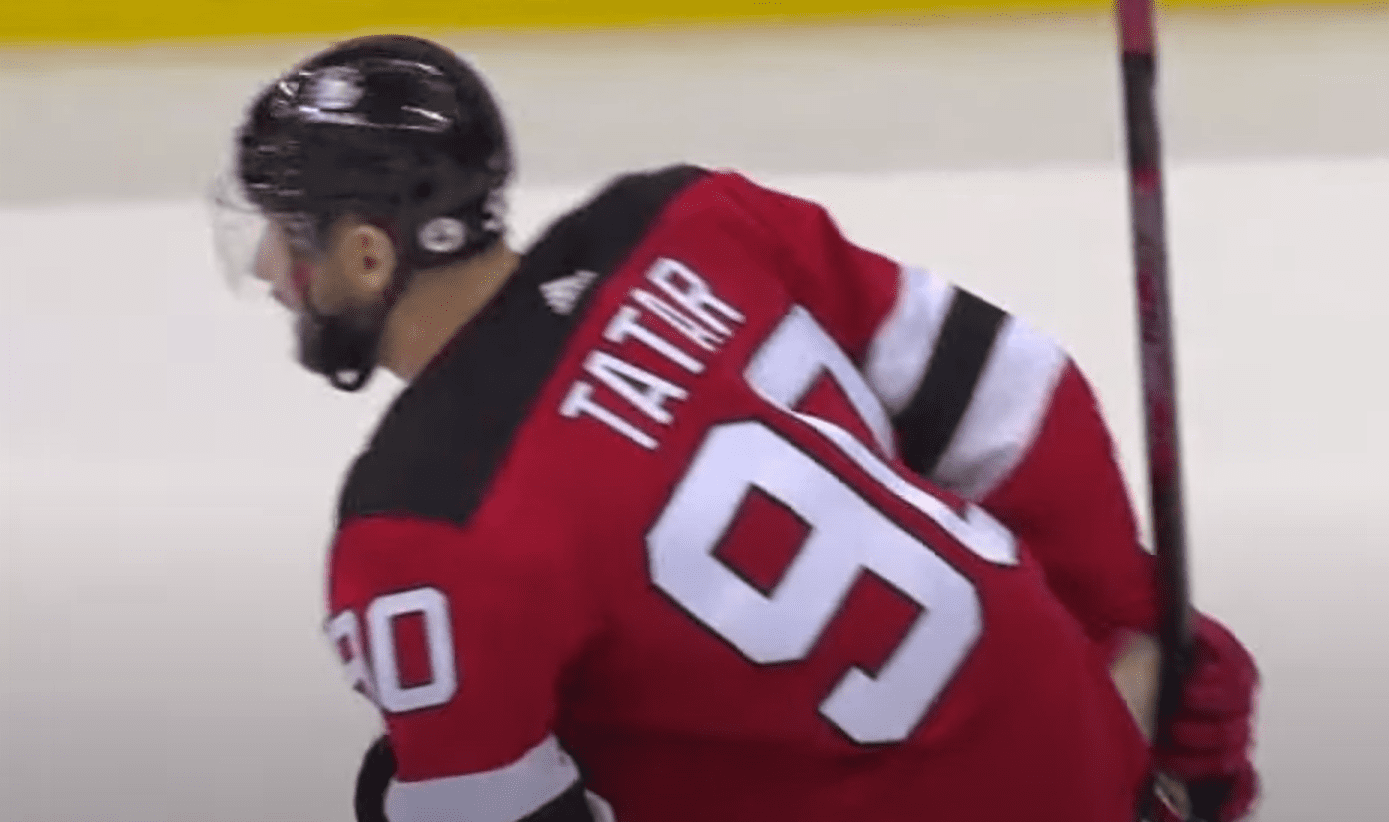Penguins
Molinari: Why Penguins Should — and Shouldn’t — Sign Tatar

Tomas Tatar told reporters in his native Slovakia a few days ago that the Pittsburgh Penguins are one of the teams with which he has spoken about a job in 2023-24.
Precisely how serious those talks have been — and whether they’re still ongoing — isn’t clear, and might not be anytime soon. Tatar, who was being honored as his country’s player of the year after a 20-goal, 28-assist season in New Jersey, said he didn’t care to elaborate on the state of talks with any club, and Kyle Dubas has effectively prevented leaks about personnel plans during his brief stint as president of hockey operations and general manager.
And while some of Dubas’ moves this summer have meshed nicely with his publicly stated objectives — to wit, upgrading the Penguins’ bottom two lines — adding a winger who can play in the top-six hasn’t been a priority since Reilly Smith was acquired from Vegas.
At least it wasn’t until Jake Guentzel had to undergo ankle surgery that will force him to sit out at least a slice of the coming season.
Suddenly, Tatar turned up on the Penguins’ radar. Whether he’s just a temporary blip remains to be seen, and there are good reasons why the Penguins should try to get him on their roster and others that make shying away from him appear to be more prudent.
Here is a look at the pluses and minuses of them attempting to reel in Tatar:
Go After Him Hard If …
1. … There is reason to believe Guentzel’s recovery from ankle surgery will take longer than initially expected.
The playoff race in the Metropolitan Division and Eastern Conference figures to be even more intense and furious than it was last season, which the Penguins failed to qualify for the postseason for the first time since 2006.
That means every point will be precious, and any the Pittsburgh Penguins fail to earn because they’re playing without their top goal-scorer for an undetermined period could make a profound difference on where they finish in the standings.
There could be very real perils to going without Guentzel, or a capable replacement, for an extended period.
2. … Tatar is willing to accept a team-friendly contract.
The Penguins already are hovering around the NHL’s salary-cap ceiling of $83.5 million for the coming season — whether they’re above or below it depends upon how one configures the regular-season roster — so they obviously are in no position to be generous, and making a commitment of more than one year to Tatar would be a gamble.
Tatar is coming off a deal that carried a cap hit of $4.5 million for each of the past two seasons, so he might balk at accepting a huge pay cut. On the other hand, he’s been on the market for a month and a half and still hasn’t been signed, so he isn’t negotiating from a position of strength.
3. … Having offensive depth up front is a priority.
There’s no way of knowing how healthy members of the Penguins’ top two lines will stay after Guentzel returns and, barring a breakout performance during training camp, no one else on the organizational depth chart is qualified for top-six duty.
Because Tatar can play either wing and has a history of being a points-producer, he’d at least be a possibility to plug any hole that might develop on the left or right side of Sidney Crosby or Evgeni Malkin.
Let Him Look Elsewhere Because …
1. … The salary-cap flexibility is more important.
The Pittsburgh Penguins already are bumping up against, if not exceeding, the cap ceiling, and even if Tatar agreed to work for minimum wage and tips (spoiler alert: He’s not a restaurant server), he would just make their cap situation even worse.
Having a degree of cap flexibility can be a valuable asset when there are injuries or potential trades, and taking on another salary, however modest, could only further complicate things when those situations arise.
2. … His lackluster defensive work is an issue.
While Tatar is a proven, if inconsistent, scorer in the NHL, he hasn’t lasted 783 games at this level because of his defensive work.
That’s probably not so much of an issue if he’d be on the first or second line, but guys on the third and fourth have to be effective all over the ice.
Perhaps the Penguins could get around that by keeping Tatar on one of the top lines and shifting a solid two-way player like Bryan Rust to the No. 3 unit, but that would only make sense if Tatar would be deemed capable of coming close to matching the production the Penguins would expect from the guy he’d be replacing.
3. … Adding him could cost a valuable role player.
Remember how Dubas stressed the importance of upgrading the bottom two lines?
Well, if Tatar would be brought in primarily as a temporary replacement for Guentzel, the Pittsburgh Penguins might well have to put one of the blue-collar guys they coveted on waivers to clear a roster spot and/or cap space for Tatar.
The risk of losing someone projected to be a solid, season-long contributor on the third or fourth line would seem to outweigh the benefits of having Tatar take on a top-six role for a few weeks, even though Dubas has acknowledged that he’s prepared to have some guys who are assigned to Wilkes-Barre/Scranton be claimed by other teams.












